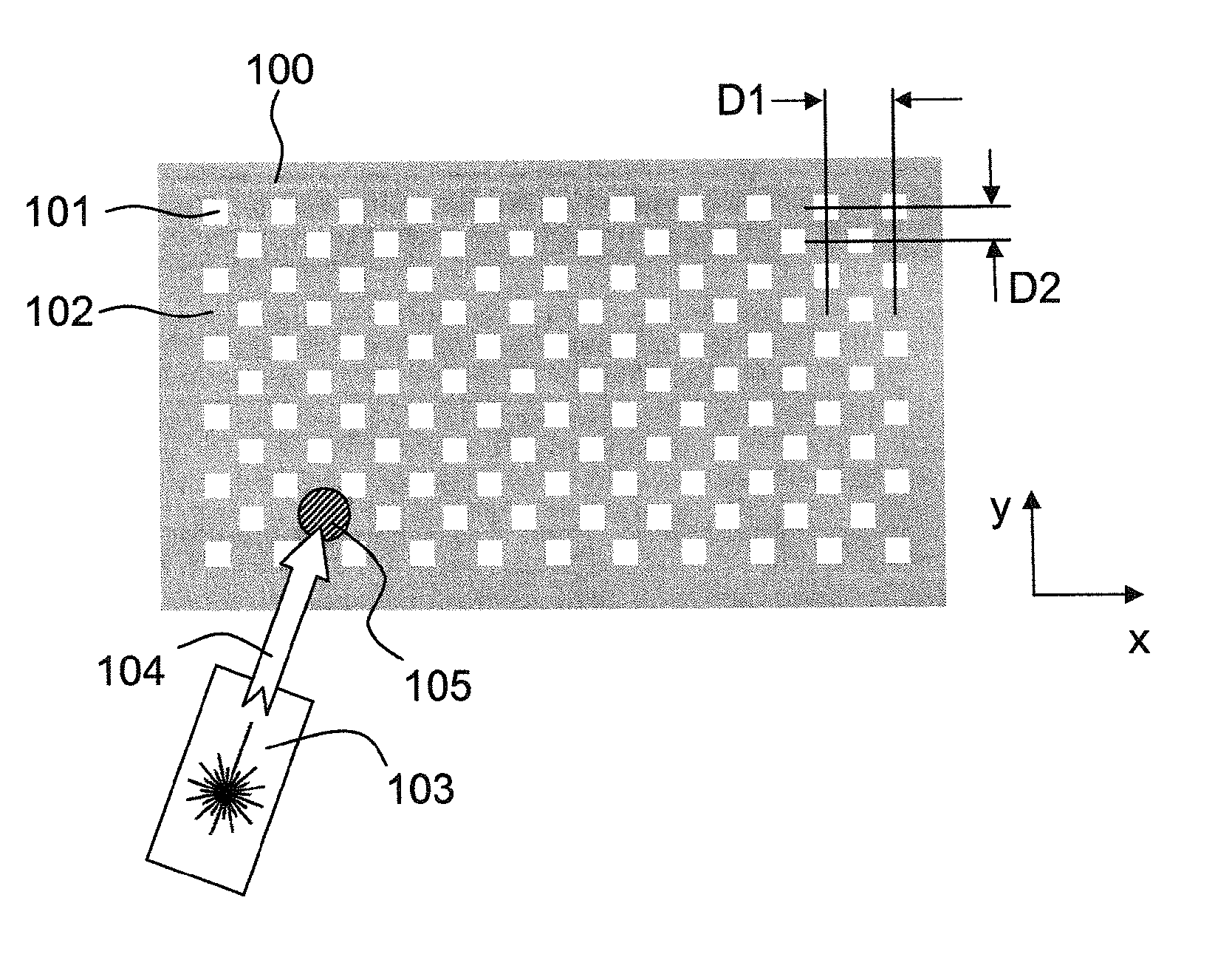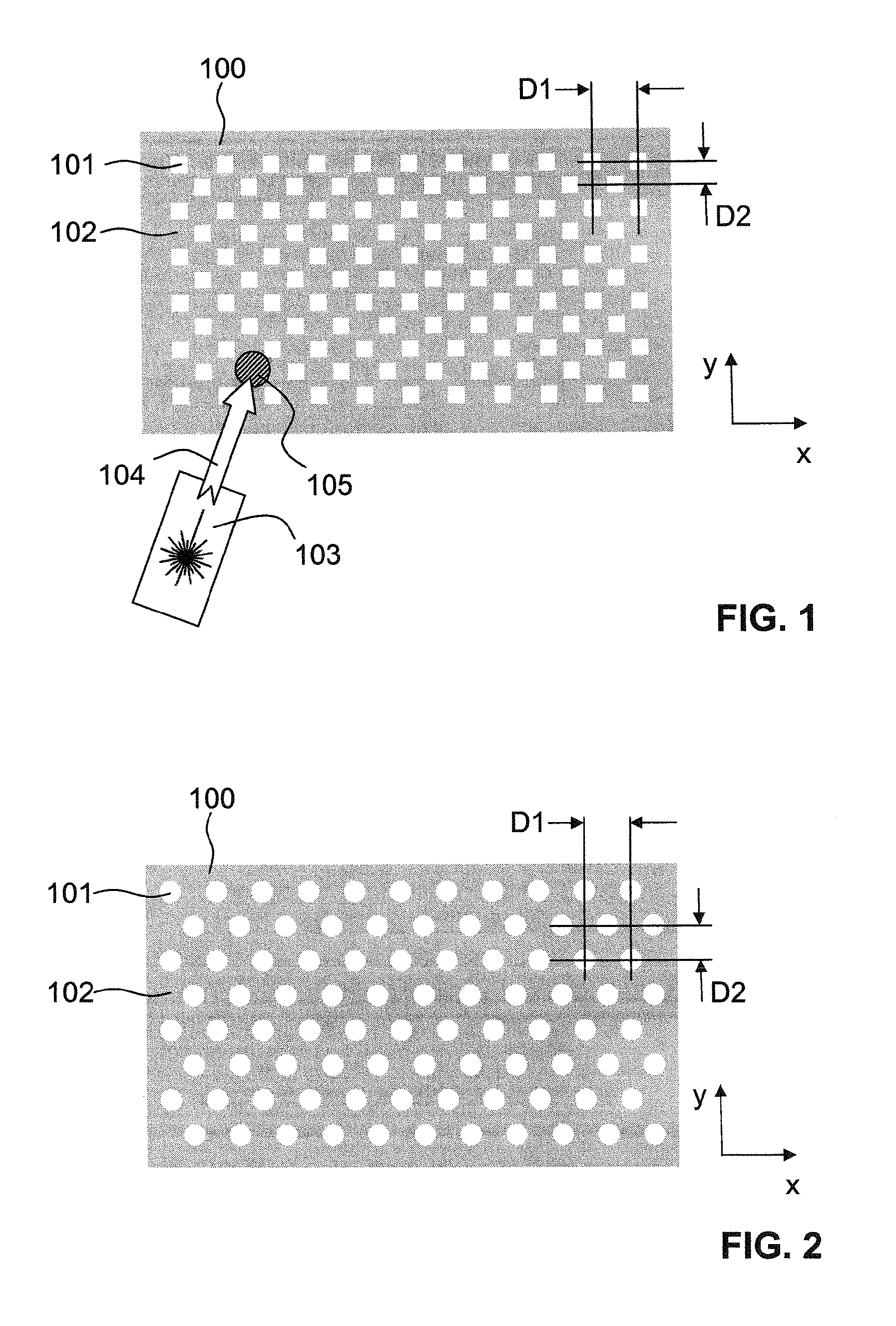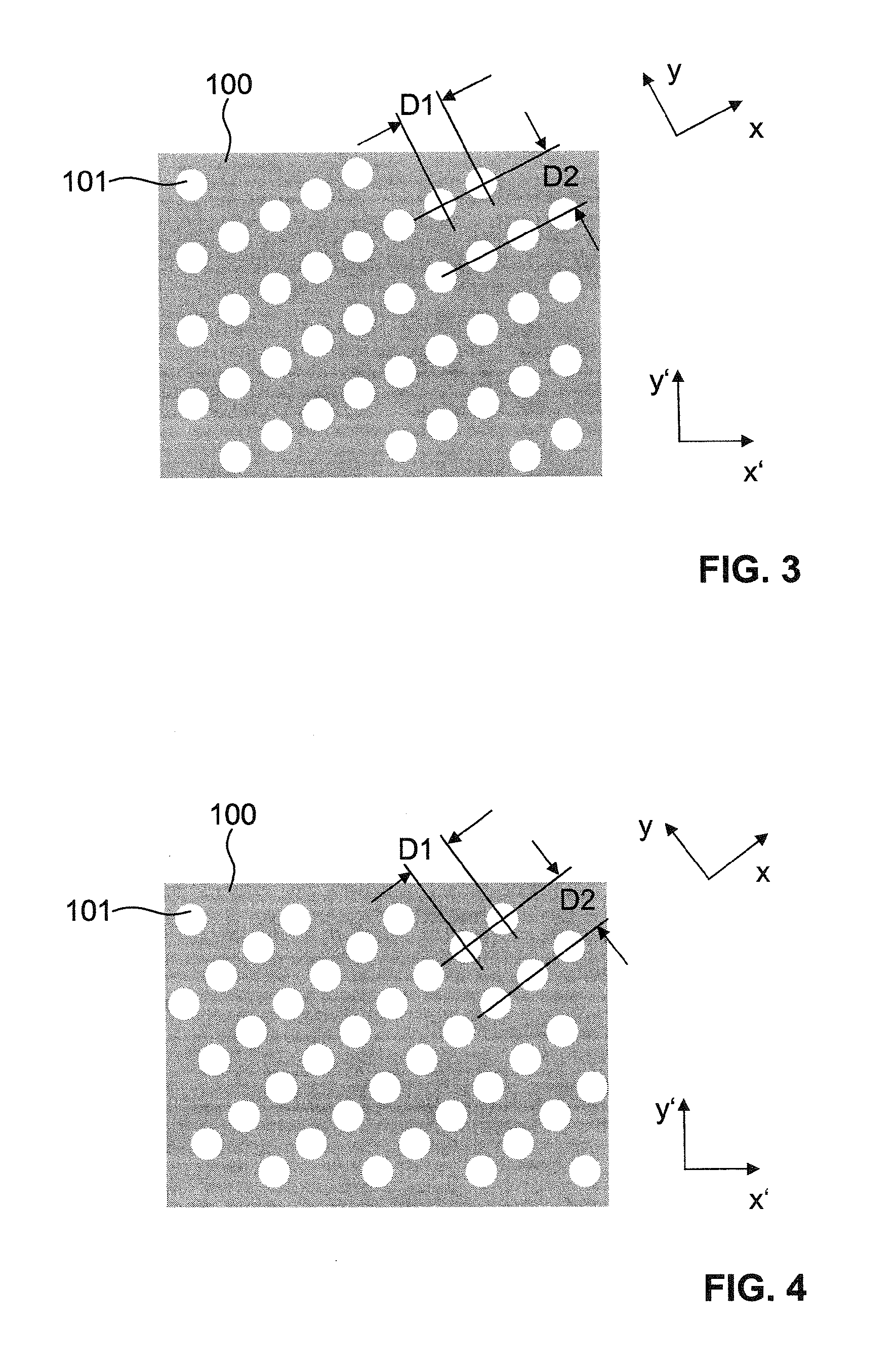High-density sample support plate for automated sample aliquoting
a sample support plate and high-density technology, applied in the field of sample support plates, can solve the problems of inability to handle small volumes of liquid samples and cells prior to analysis by maldi-ms, droplet waste, and irregular distribution of analyte molecules
- Summary
- Abstract
- Description
- Claims
- Application Information
AI Technical Summary
Benefits of technology
Problems solved by technology
Method used
Image
Examples
first embodiment
[0081]In FIG. 1, a sample support plate according to the present invention is schematically illustrated. The sample support plate comprises a stainless steel substrate 100 having a flat, planar surface coated with an omniphobic polysilazane coating. A regular arrangement of a plurality of hydrophilic sample recipient sites 101 has been produced on the substrate by removing the coating at the sample recipient sites by laser ablation, exposing the stainless steel surface at these sites, while the areas 102 between sample recipient sites remain omniphobic. The sample recipient sites have a square shape. They are arranged in a plurality of rows, wherein the recipient sites within each row are spaced along a first direction (the x direction) by a center-to-center distance or periodicity D1. Adjacent rows are shifted with respect to each other along the x direction by half the distance D1. The rows are regularly spaced along a perpendicular second direction (the y direction) by a centerli...
third embodiment
[0085]a sample support plate according to the present invention is schematically illustrated in FIG. 3. Here, the rows of sample recipient sites 101 (direction x) are inclined relative to the borders of the array of sites and to the edges of the sample support plate by an angle that is different from 0 or 90° (here approximately 27° relative to the longitudinal edge, whose direction is designated by x′). This orientation of the rows ensures that any straight line that is drawn parallel to the longitudinal edges of the sample support plate at any arbitrary position within the array will cut at least three sample recipient sites. Of course, the exact number of sample recipient sites that will be cut by the straight lines will depend on various factors, such as the number of recipient sites in the array, the shape and size of the array, size of the recipient sites, their distance along the x direction, the row spacing along the y direction, the amount of shift along the x direction bet...
fourth embodiment
[0086]FIG. 4 provides a sample support plate according to the present invention, for which a different spacing of rows and a different tilt angle between the x and x′ directions has been chosen.
[0087]Whereas the sample recipient sites of the above examples are of square and circular shape, respectively, other shapes are possible, including elliptic, rectangular, triangular, and regular polygonal and irregular polygonal shapes.
[0088]FIG. 5(a) illustrates a first example of how a sample may be applied to a sample support plate according to the present invention. A bulk aqueous liquid, in the present example a cell suspension comprising cells 151 that are to be investigated, is spread onto a sample support plate 100 with the aid of a spreading device in the form of a glass slide 154. To this end, the glass slide is moved over the sample support plate 100 along the x direction (arrow 155). During the spreading of the liquid, liquid droplets 153 accumulate at the hydrophilic sample recip...
PUM
 Login to View More
Login to View More Abstract
Description
Claims
Application Information
 Login to View More
Login to View More - R&D
- Intellectual Property
- Life Sciences
- Materials
- Tech Scout
- Unparalleled Data Quality
- Higher Quality Content
- 60% Fewer Hallucinations
Browse by: Latest US Patents, China's latest patents, Technical Efficacy Thesaurus, Application Domain, Technology Topic, Popular Technical Reports.
© 2025 PatSnap. All rights reserved.Legal|Privacy policy|Modern Slavery Act Transparency Statement|Sitemap|About US| Contact US: help@patsnap.com



